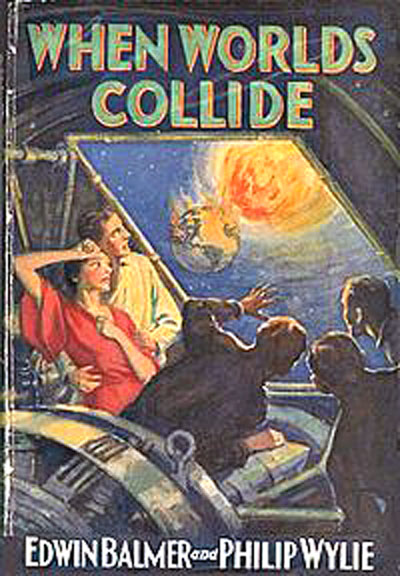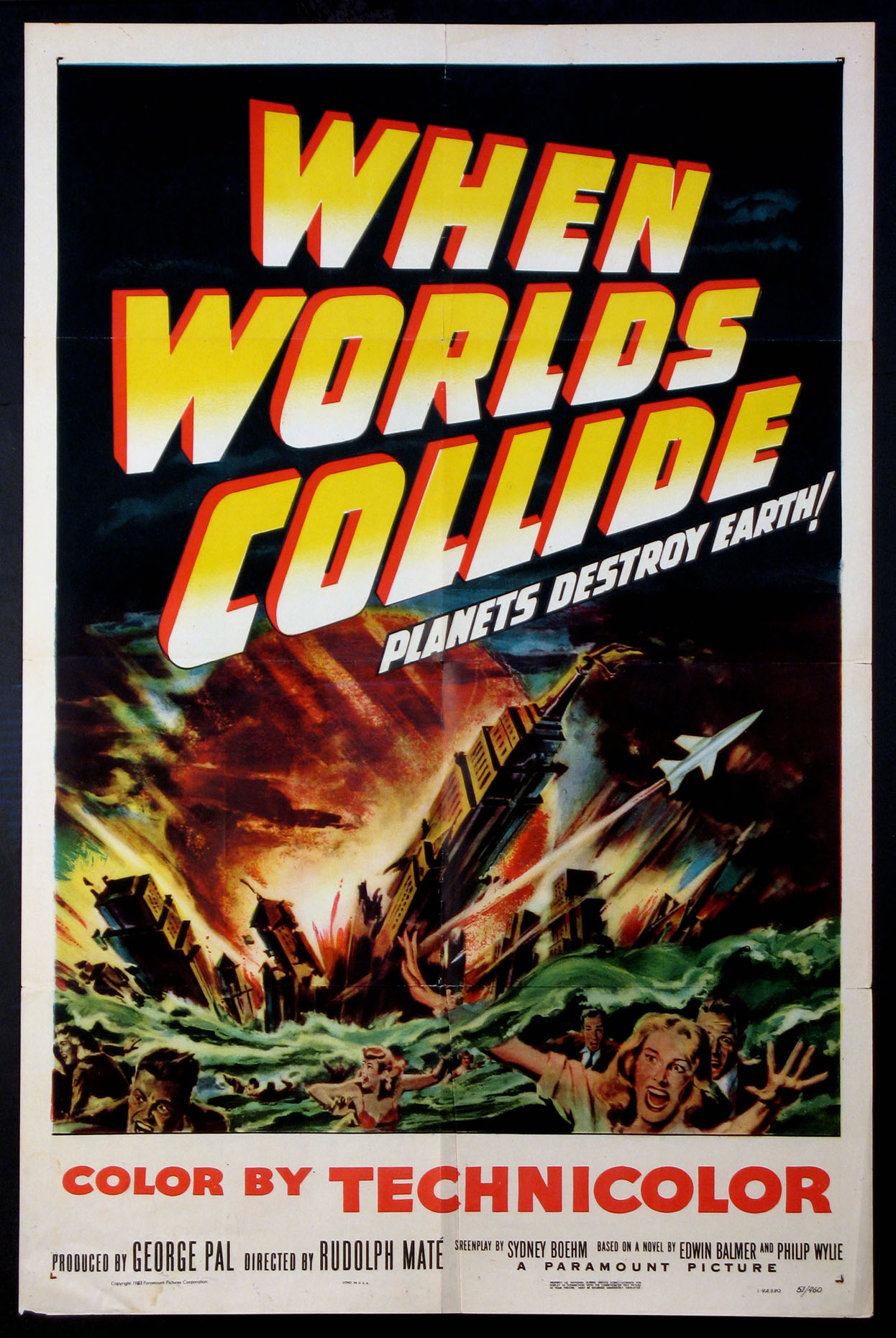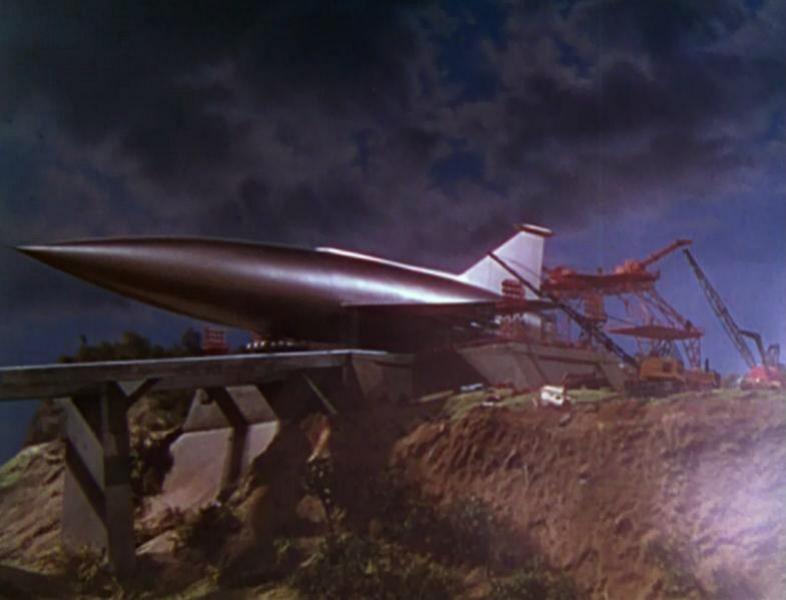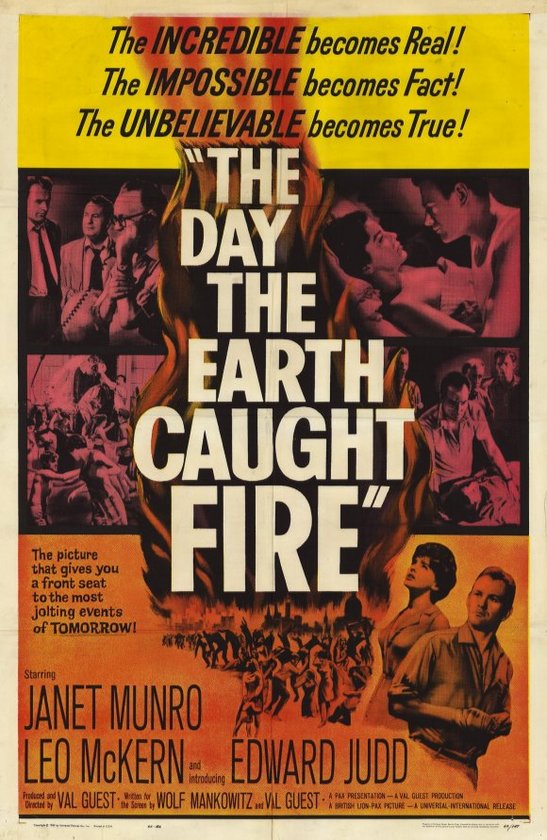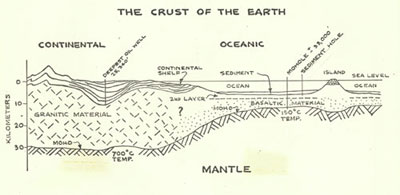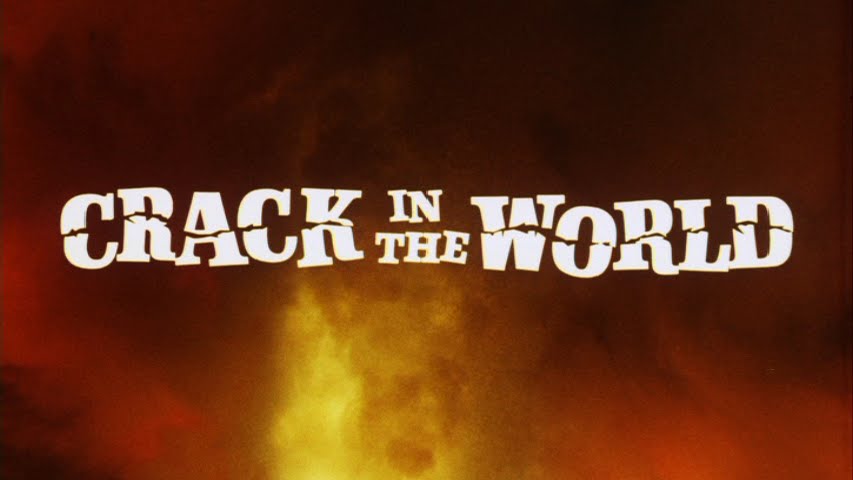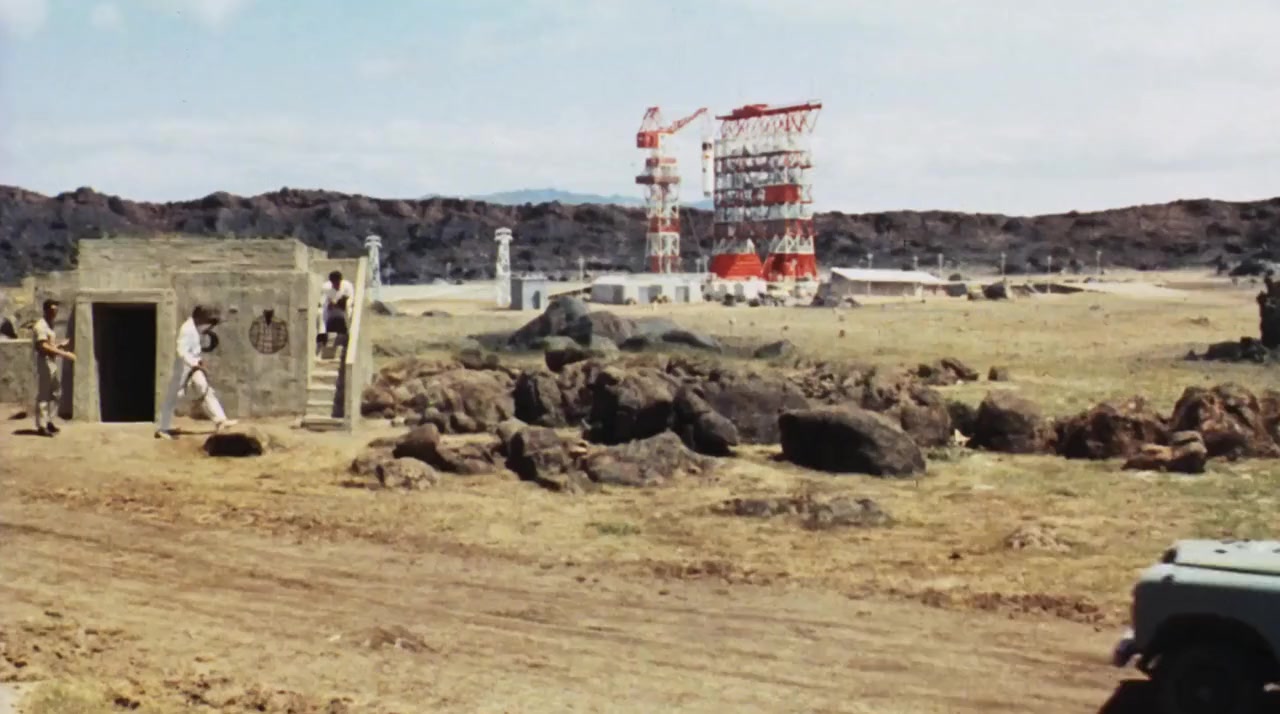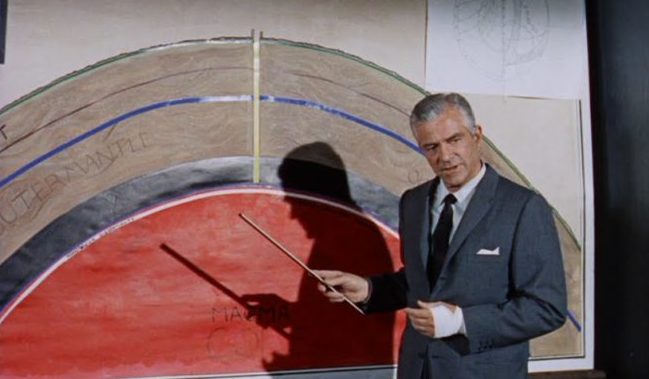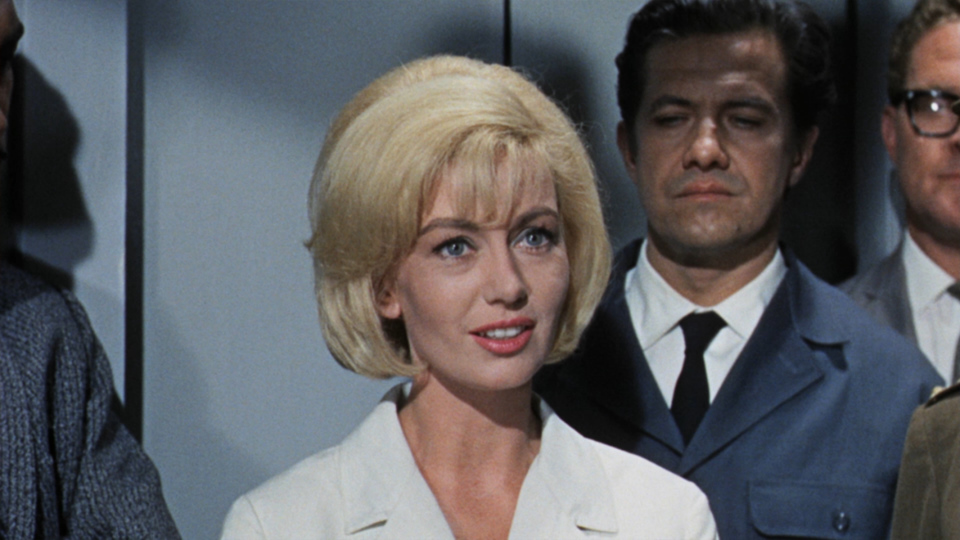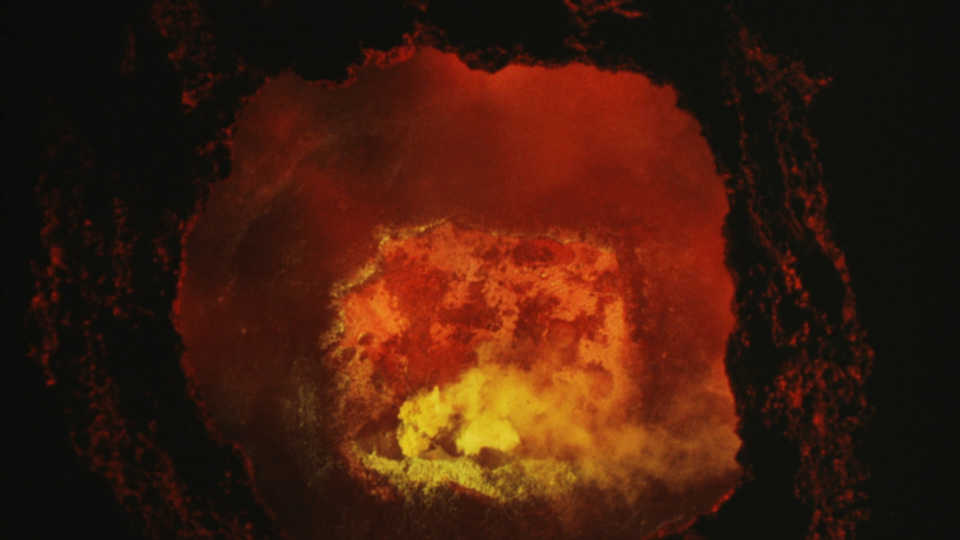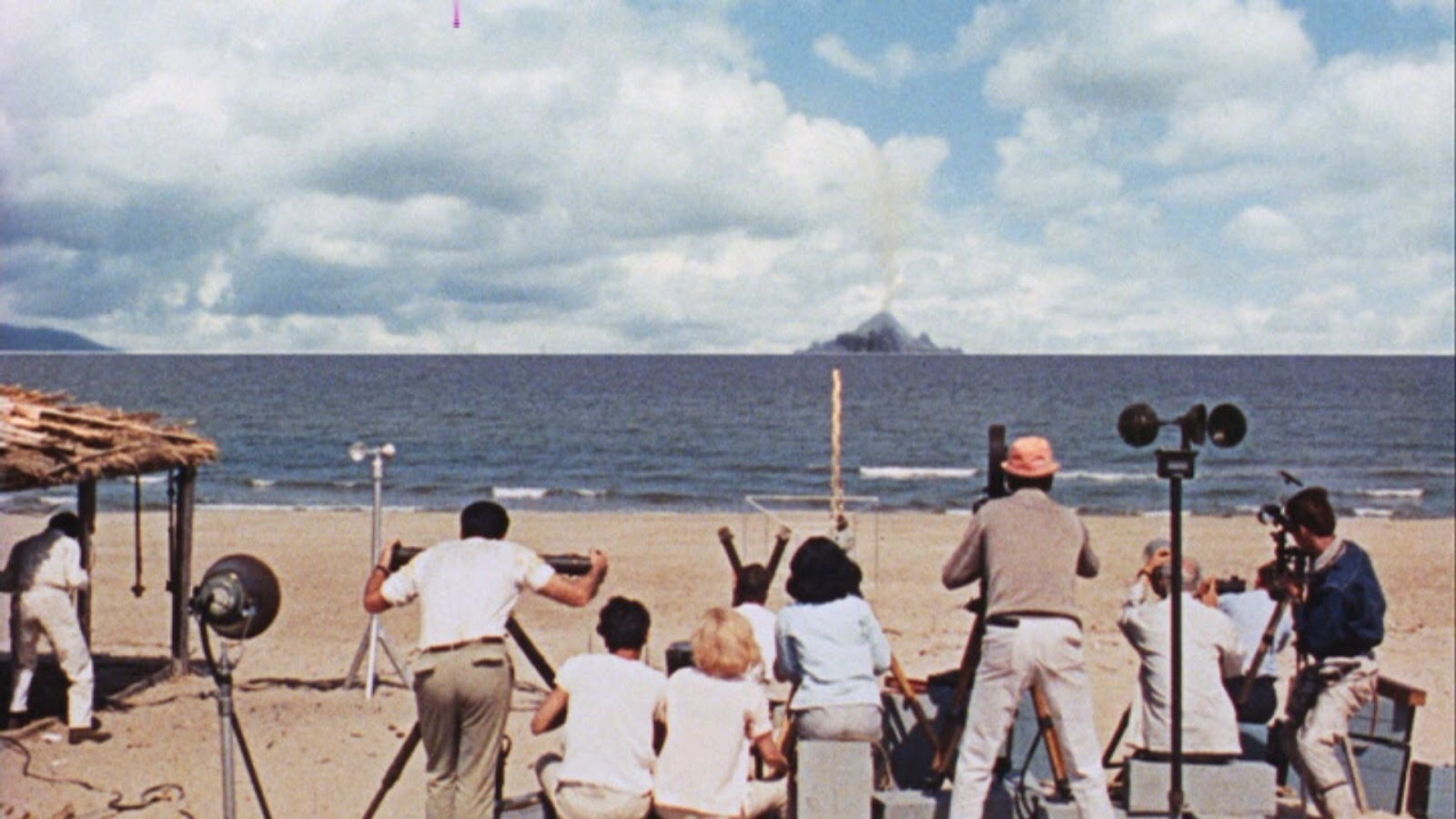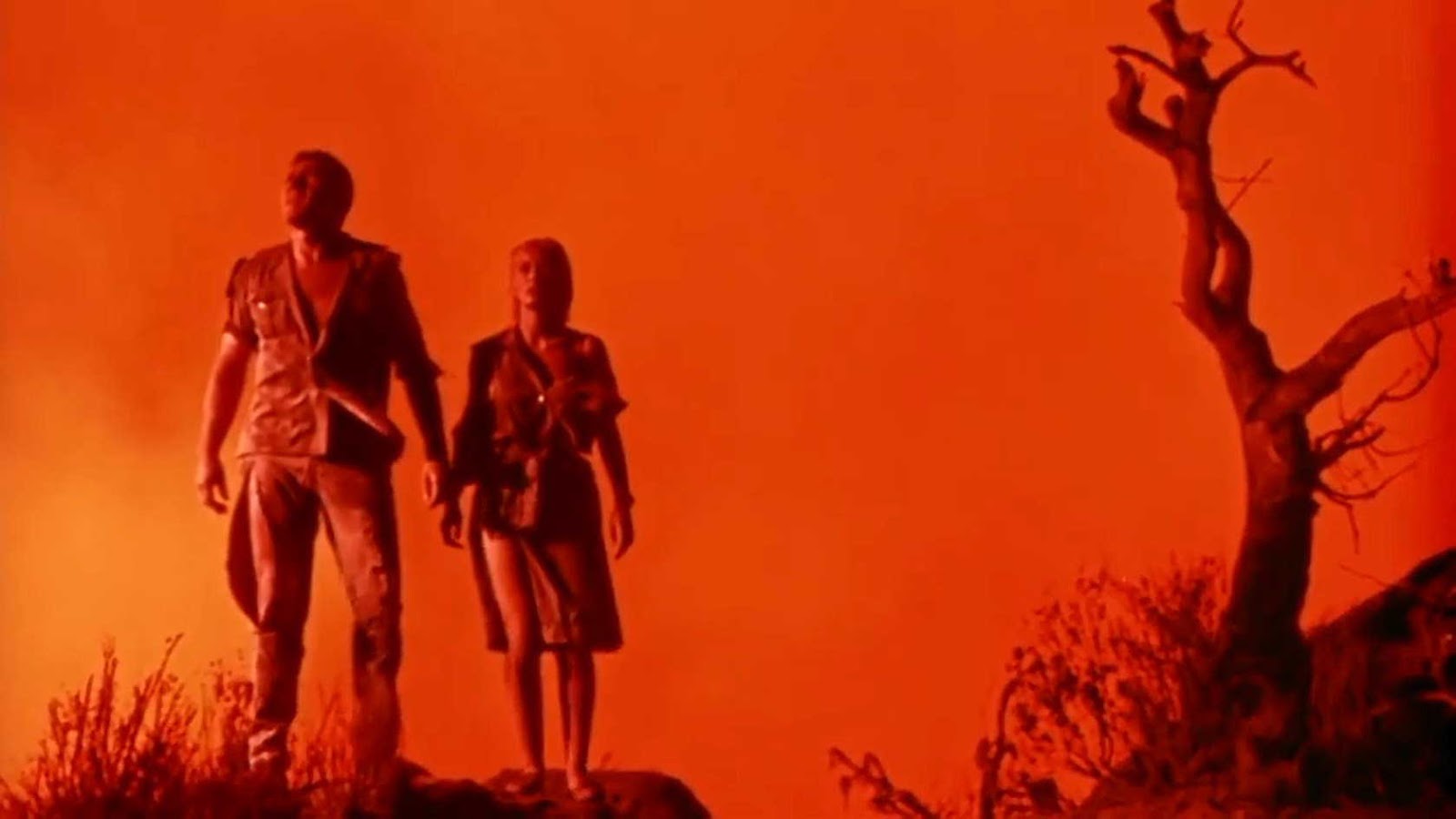
by Cora Buhlert
Comic Shopping in Brussels
Regular readers of the Journey may remember that I occasionally visit Belgium, particularly the beautiful cities of Antwerp and Brussels, on business. Whenever I'm in Brussels, I try to find the time for a stroll along the Rue Neuve/Nieuwe Straat, the city's main shopping street and home to trendy boutiques, elegant movie palaces and luxurious department stores.
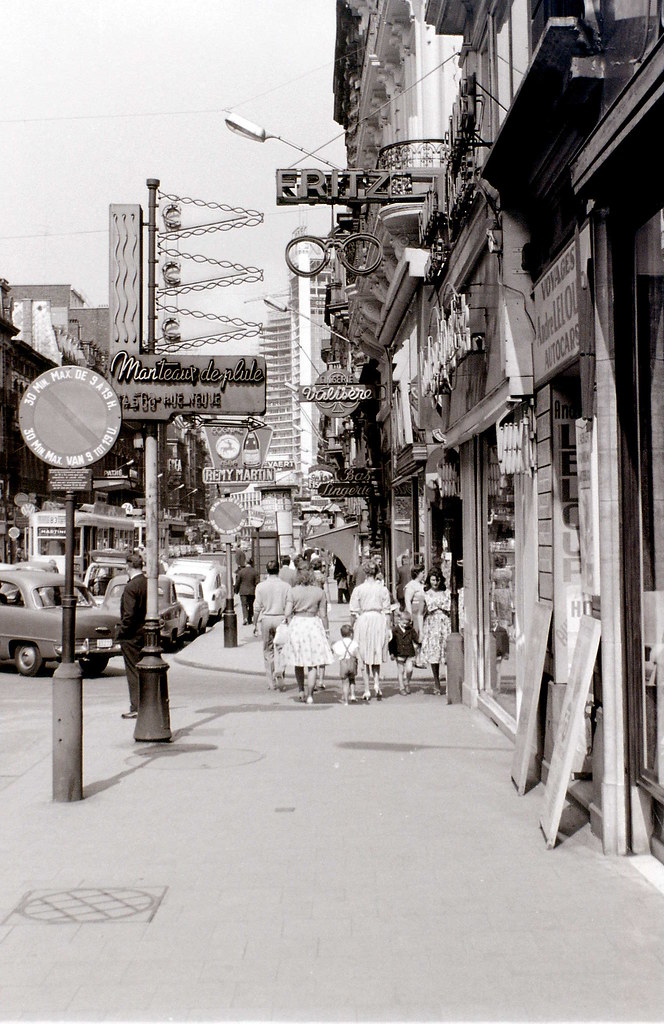
The foremost of the department stores along the Rue Neuve and also the most beautiful is À l'Innovation (For Innovation), "Inno" for short. Built in 1897 by the famous architect Victor Horta, the À l'Innovation store is a stunning Art Noveau building with a glass-covered façade. Inside, the various departments are arranged around an open atrium that is crisscrossed by walkways and topped by a skylight.
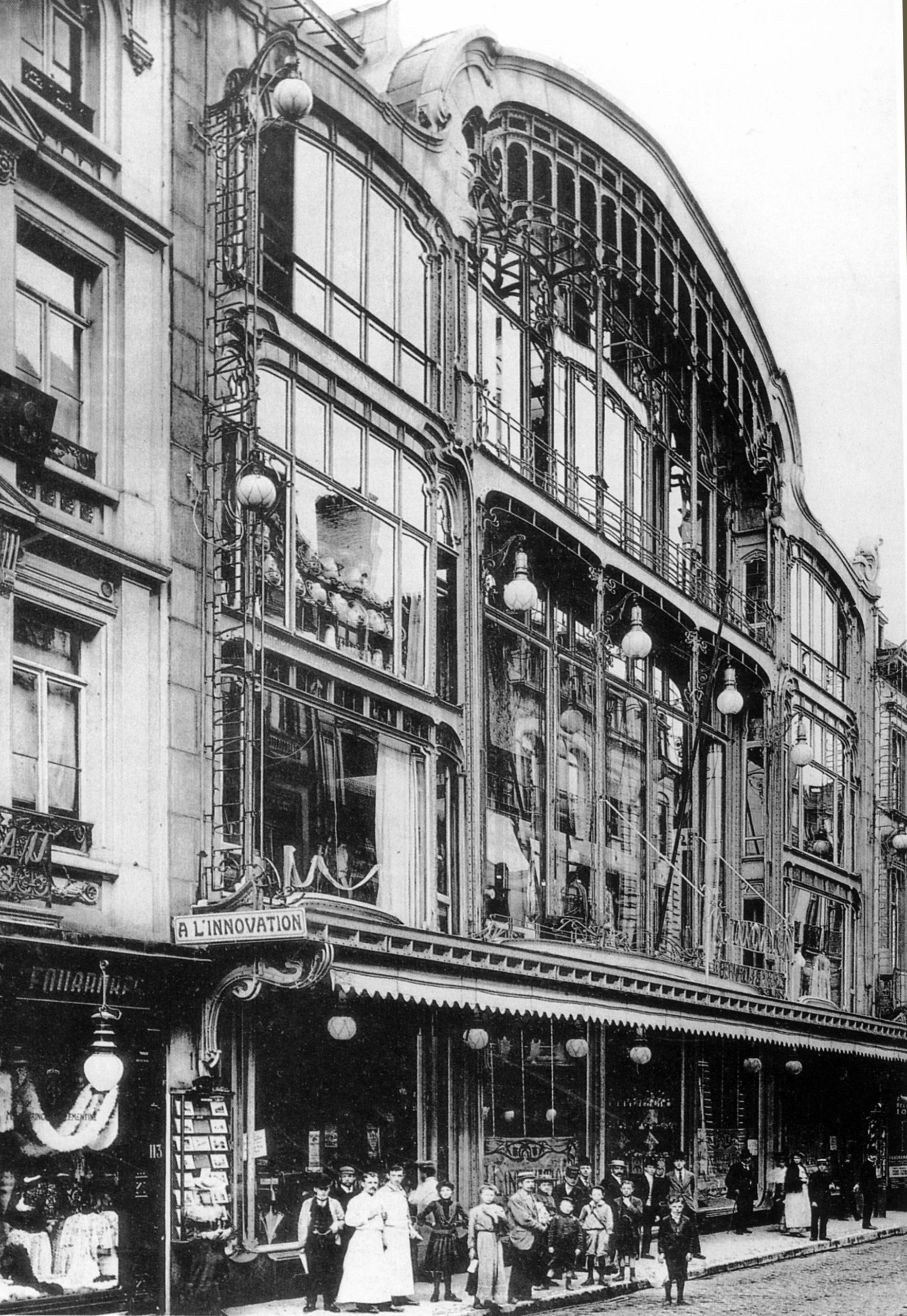

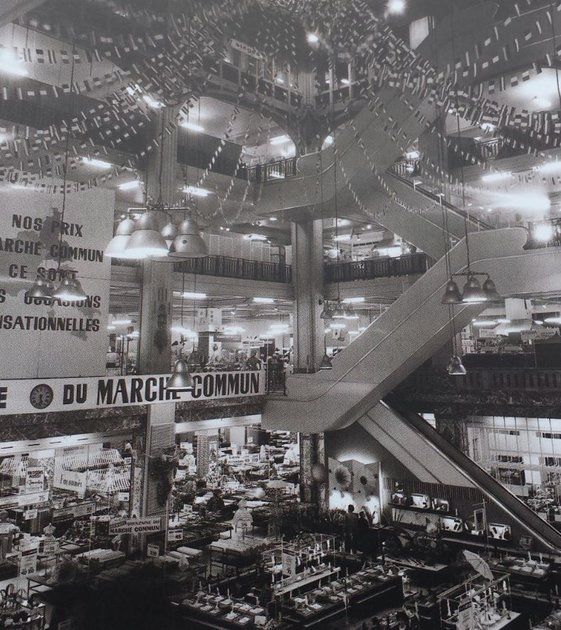
The last time I was in Brussel in April, I stopped at the Standaard Boekhandel book shop directly across the street from À l'Innovation to pick up the latest comics. The venerable weekly comics magazine Tintin has launched a slew of new strips to keep up with the competition of Spirou and particularly the French comics magazine Pilote. Several of the new series are promising such as Bruno Brazil, a James Bond inspired spy adventure by Greg a.k.a. Michel Régnier with artwork by William Vance a.k.a. William van Cutsem, Howard Flynn, a Horatio Hornblower style naval adventure set in the 18th century by Yves Duval and William Vance, and Bernard Prince by Greg and Hermann a.k.a. Hermann Huppen, which combines spy and sea adventures. Tintin even has a new science fiction comic called Luc Orient, also written by Greg with artwork by Eddy Paape, which seems to be inspired by the Flash Gordon comics of the 1930s.

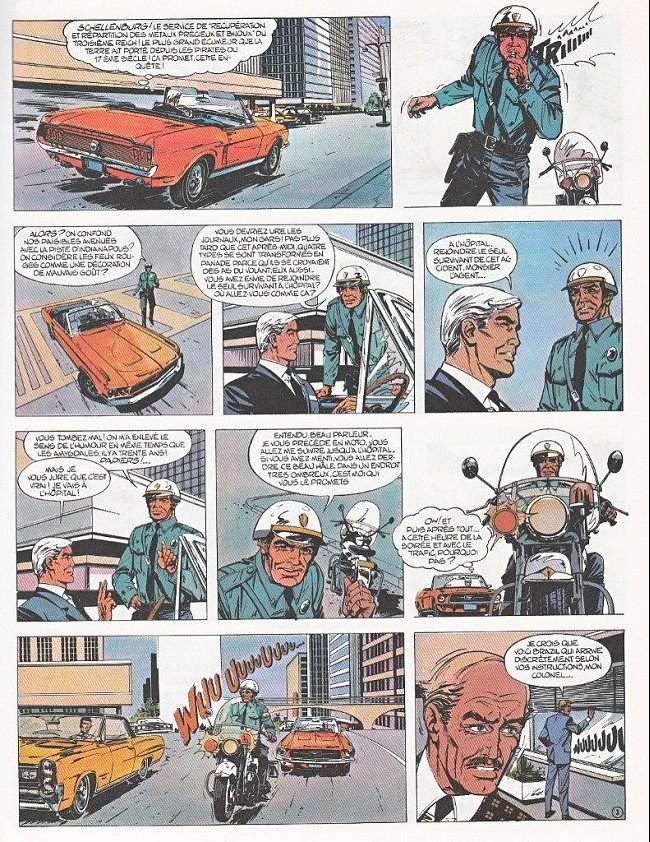
After I bought the comics, I headed across the street to À l'Innovation for a stop at the marble-tiled bathrooms. Then I went to the top floor restaurant to flip through my new purchases under the Victor Horta designed skylight, while enjoying a remarkably good meal for a department store restaurant. Little did I know that this would be the last time I'd ever see this store.

Smoke over Brussels

For when I switched on the evening news on May 22, I was greeted by footage of the rooftops of Brussels engulfed in smoke. A massive fire had broken out around lunchtime at the À l'Innovation store and completely gutted not only the beautiful Victor Horta building, but the neighbouring Priba supermarket and the entire city block as well. The final death toll is not yet known, as firefighters are still combing through the wreckage and many victims are still fighting for their lives in Brussels hospitals, but more than three hundred are feared dead.
In the end, the beautiful Art Noveau architecture, which I had always admired so much, was what doomed the building and the more than three hundred souls who perished. The polished wooden floors and wall panelling not to mention the merchandise, much of which was flammable, burned like tinder, while the stunning atrium acted like a chimney and fanned the flames. And since the building was seventy years old, it was not equipped with modern fire-suppression measures like a sprinkler system. There were fire extinguishers, of course, and standpipes, but the standpipes did not function and the fire extinguishers were not sufficient to stop the fire. And so the grand staircase with its ornate banisters, which I had walked up and down so often, was engulfed in thick black smoke within minutes, making escape impossible for those on the upper floors.

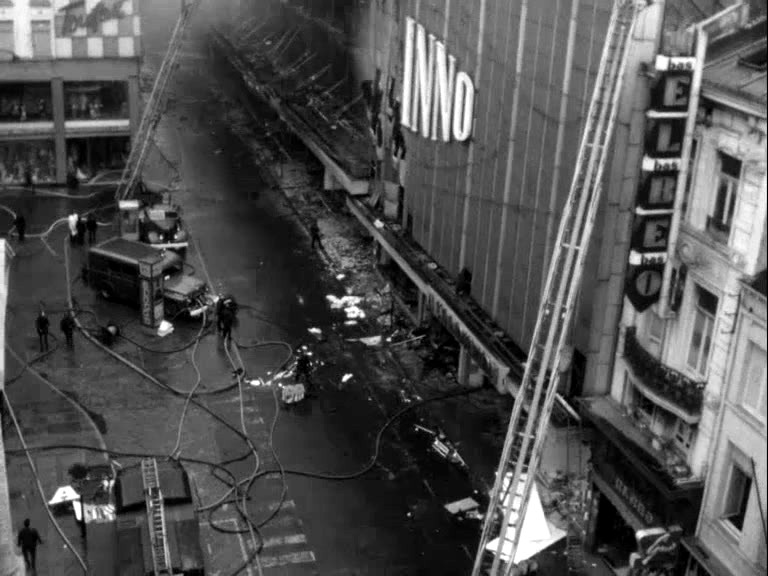
The Brussels fire brigade was quickly on site and more than 150 firefighters risked their lives to fight the flames and rescue those trapped inside the burning building. However, there were many challenges such as the non-functioning standpipes or the fact that the Rue Neuve is a narrow street, which makes manoeuvring difficult for large fire trucks, particularly the ladder trucks that were so vital to saving those trapped on the upper floors.

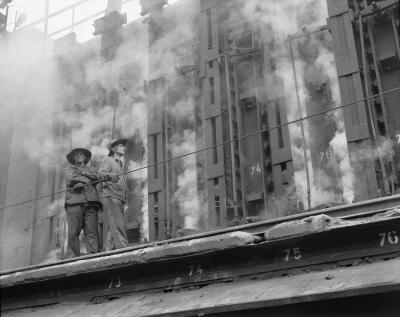


Scenes of Horror
Eye witnesses describe horrifying scenes. People burst out of the exits with clothes and hair on fire, molten synthetic fabric fused with their skin. A woman who had been shopping with her young daughter grabbed the girl's hand and ran for the exit. She managed to escape, but once she stumbled onto the Rue Neuve, she turned around and realised that the child whose hand she was clutching was not her daughter at all.
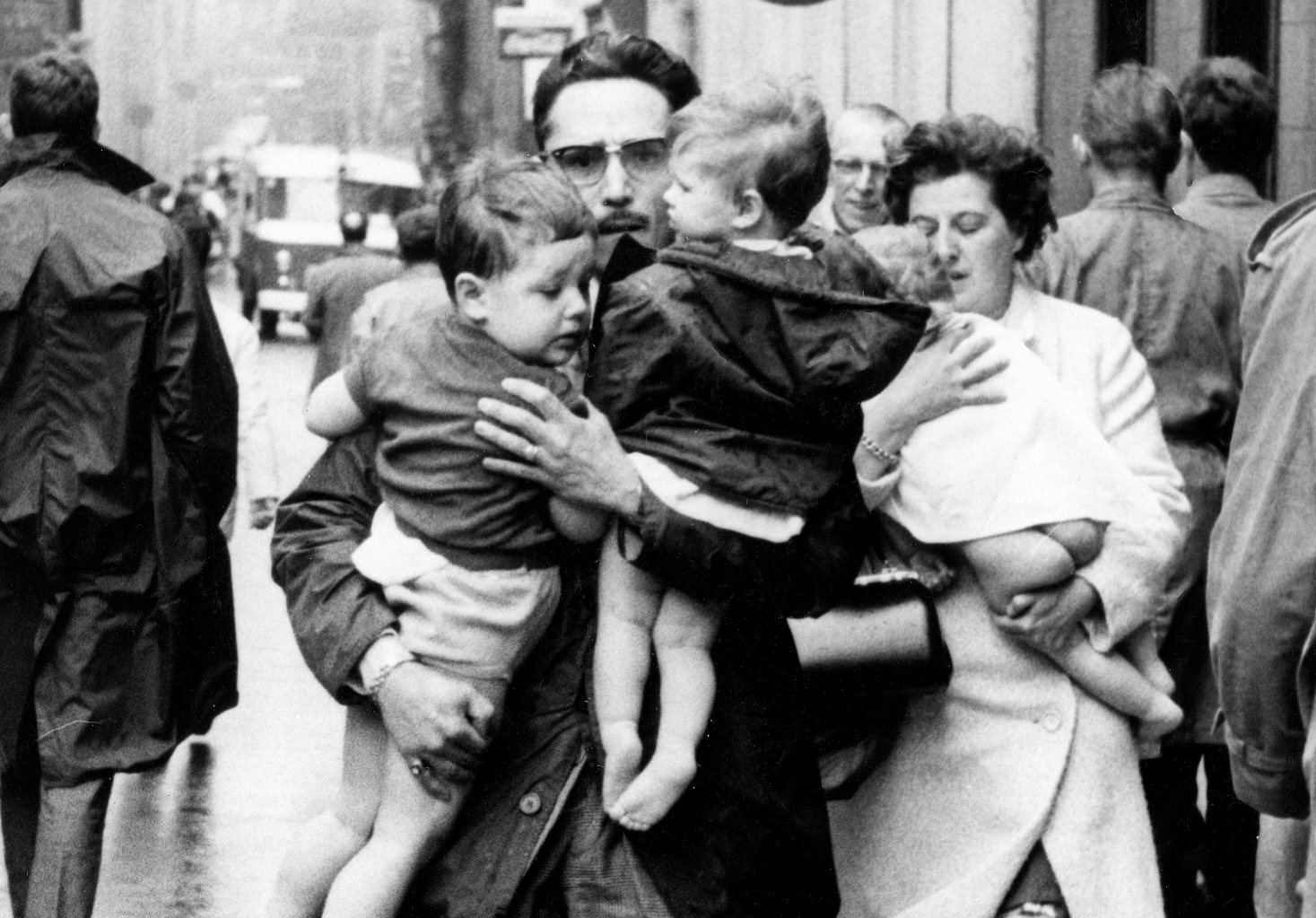
The most terrible scenes, however, happened on the upper floors, where hundreds of shoppers and staff were trapped by fire and smoke, unable to escape. In desperation, people broke the window panes of the glass façade on their quest to flee the flames. Many were rescued by firefighters with ladders, but others fell or jumped to their deaths, including a woman and her three young children. A few lucky souls managed to make it to the roof of the store and scrambled to the safety of neighbouring buildings, from where they could be rescued.
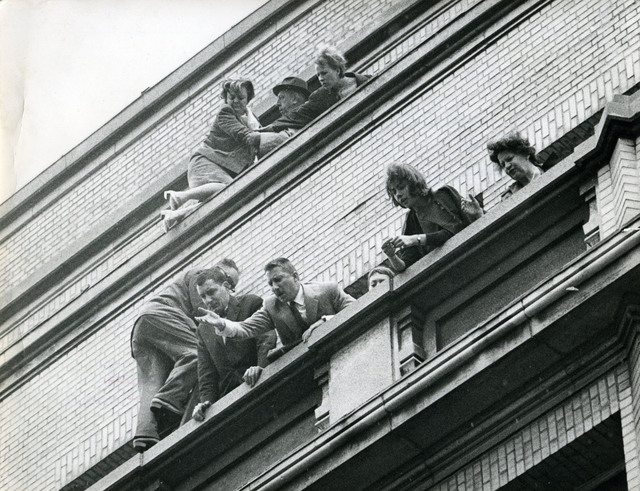



In spite of the best efforts of the Brussels fire brigade, the blaze also spread to the neighbouring shops, which had to be evacuated as well. Robert Dehon, a clerk at the Priba supermarket next to Inno helped survivors to safety and only narrowly escaped himself, when the fire reached the supermarket. Meanwhile, the staff of a furrier's shop desperately tried to save their merchandise from the flames, throwing expensive fur coats from the upper floors to the Rue Neuve below, into the waiting arms of fire fighters and civilian helpers.
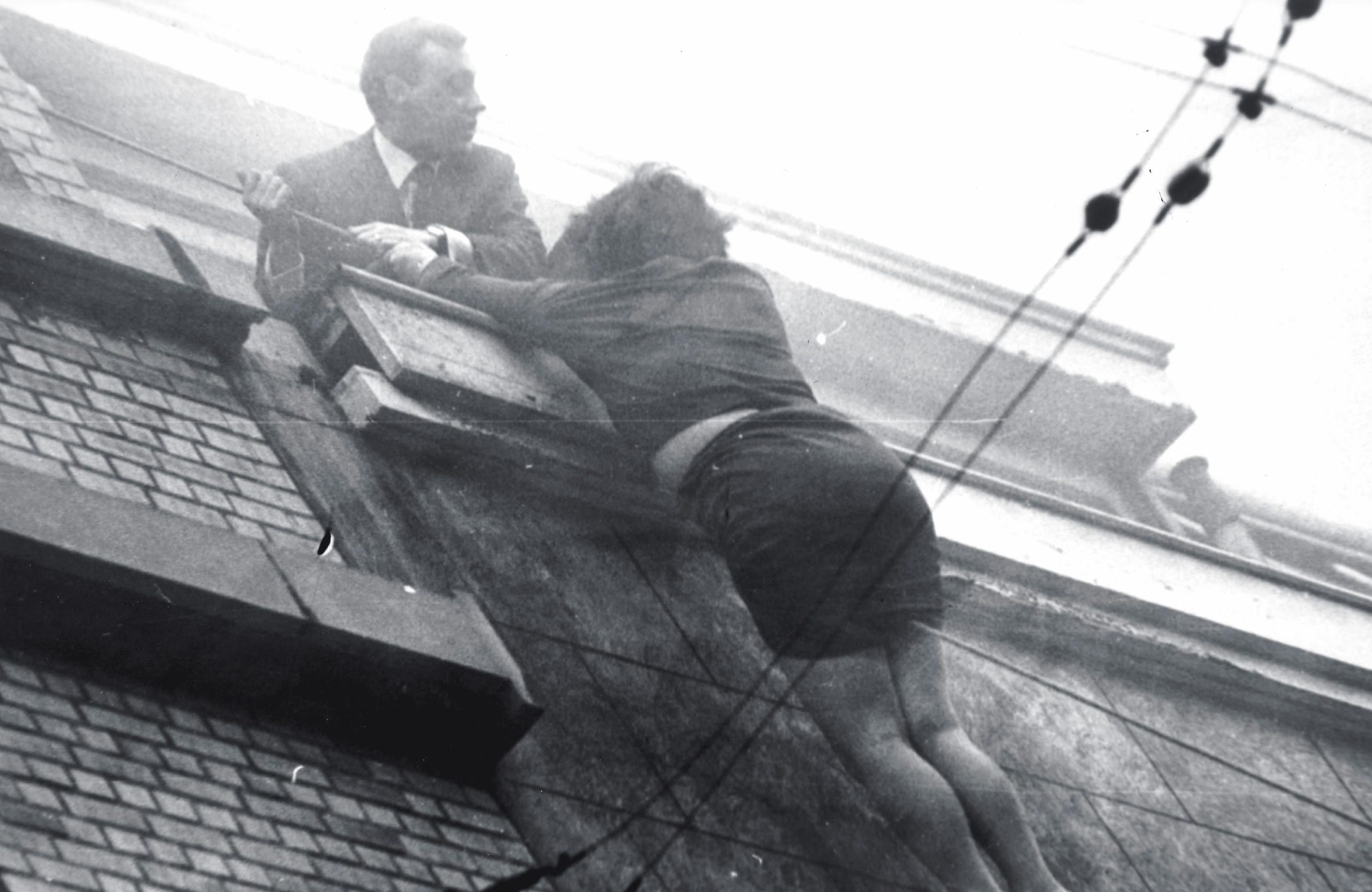

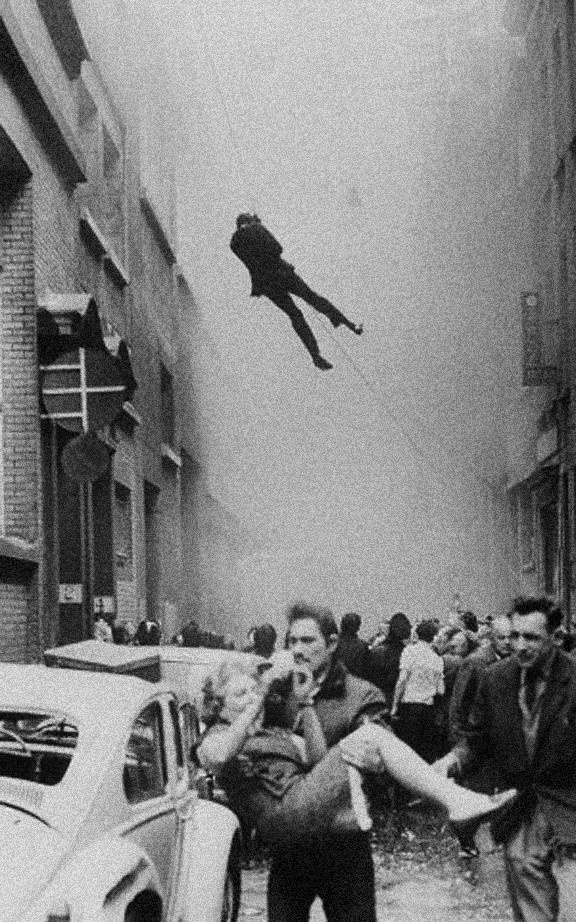
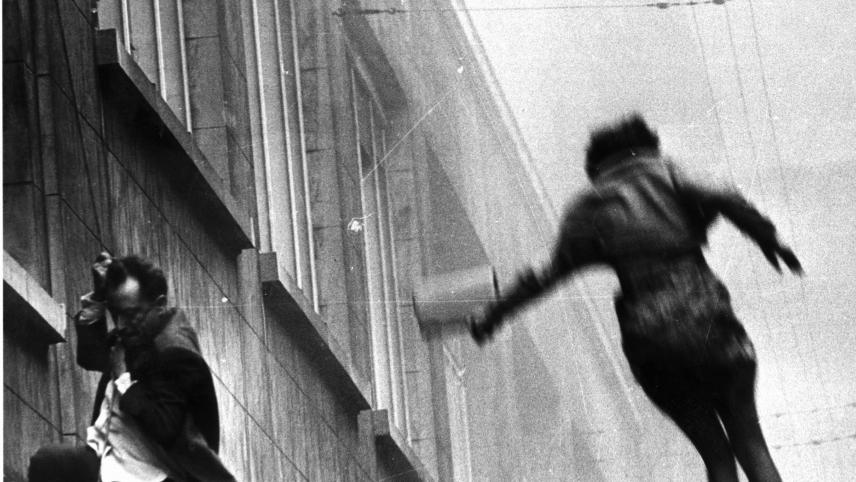
Because the fire broke out around lunchtime, the top floor restaurant under the glass skylight was bustling with shoppers and diners. The fire alarm was not heard by many people in the busy restaurant or they were reluctant to leave the food and drink they had paid for behind. And by the time the smoke and fire reached the restaurant it was too late for most. In fact, it was here – in the very restaurant where I had lunch while flipping through the latest comics barely a month ago – that many of the victims died.
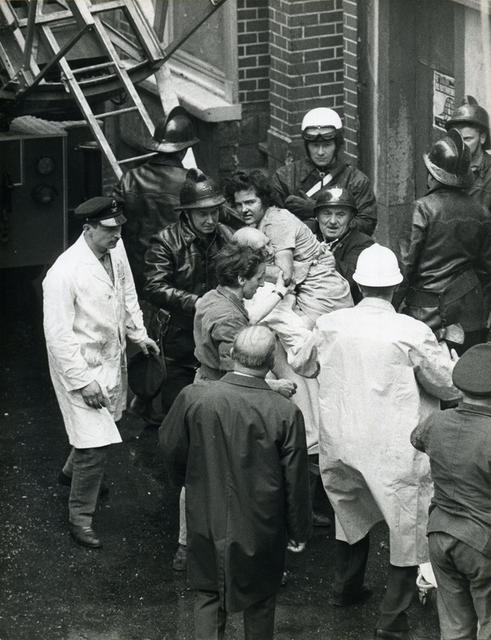

Protests and Sparks
So far, it is not certain what caused the fire. In fact, is not even certain, where it started. There are conflicting reports by survivors and since the building was completely gutted, fire investigators have difficulties locating the exact ignition source. Most survivors agree that the fire was first spotted in the children's department on the first floor, though some also claim that it started in the camping department on the third floor and that exploding butane gas cylinders fuelled the flames. Yet others report that the fire started in the kitchen of the top floor restaurant
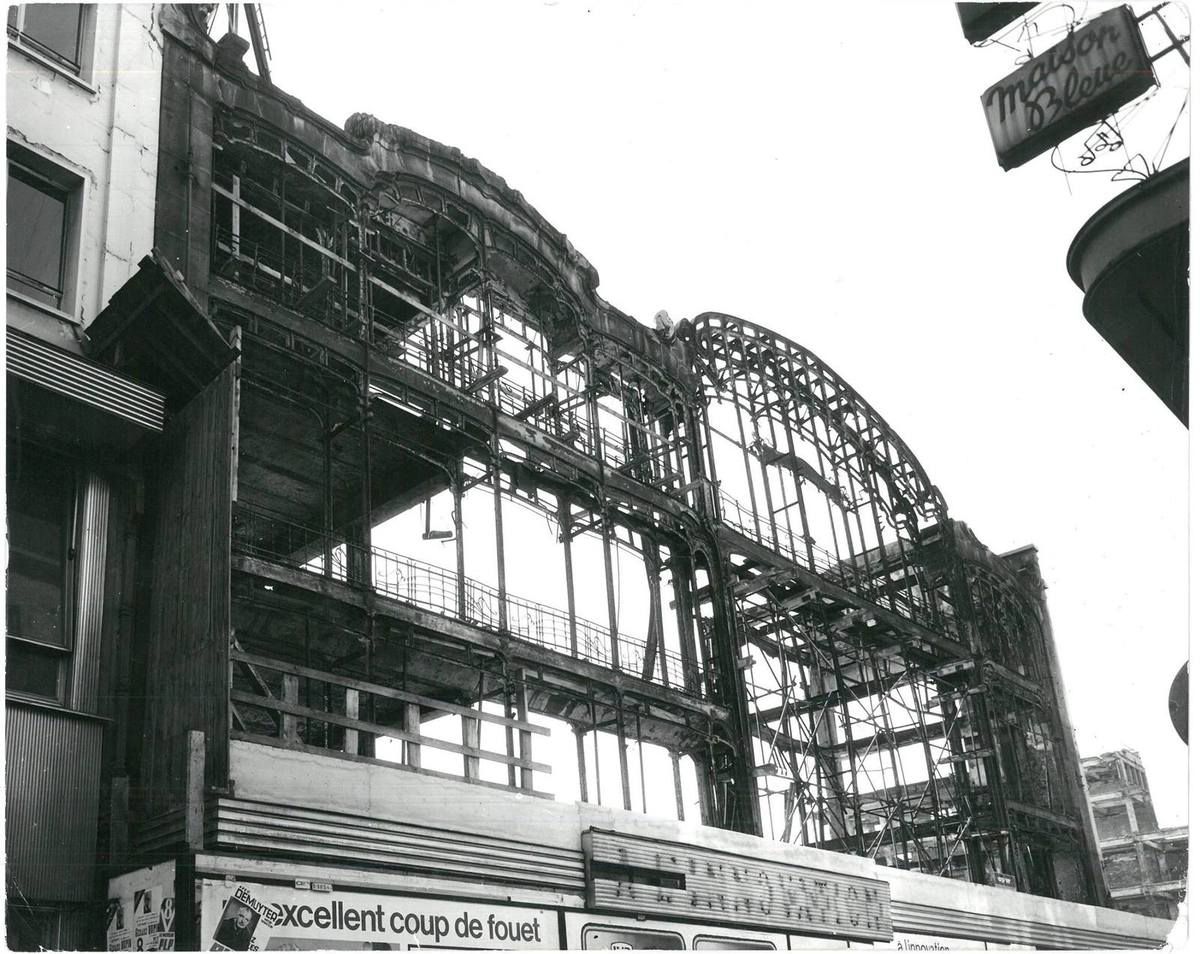





But no matter where exactly the fire started, a very dark picture is beginning to emerge regarding its cause. For though the Brussels police and fire brigade are investigating all possibilities, including a gas leak, an overheated light bulb or faulty wiring in the old building, there is a good chance that this devastating fire that cost the lives of more than three hundred people was due to arson.
In early May, À l'Innovation launched a special promotion called "US Parade", where American products such as jeans, barbecue equipment and toys were offered for sale. Such promotions are nothing unusual, many European department stores run them to showcase products from a specific country. They are also popular with shoppers, because it is a chance to purchase international products that you cannot normally get.
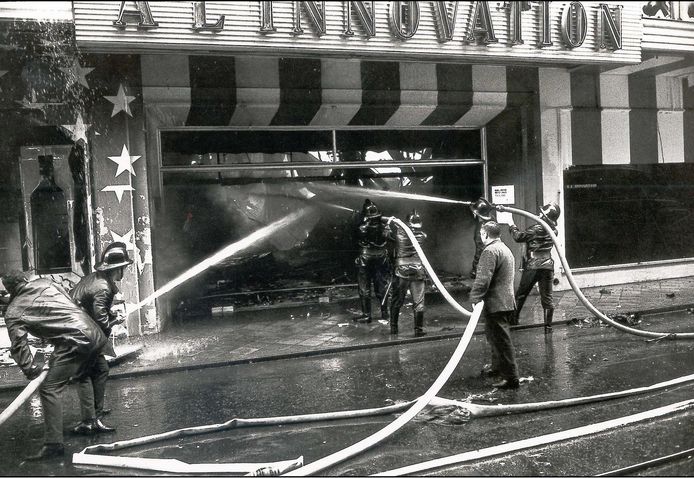
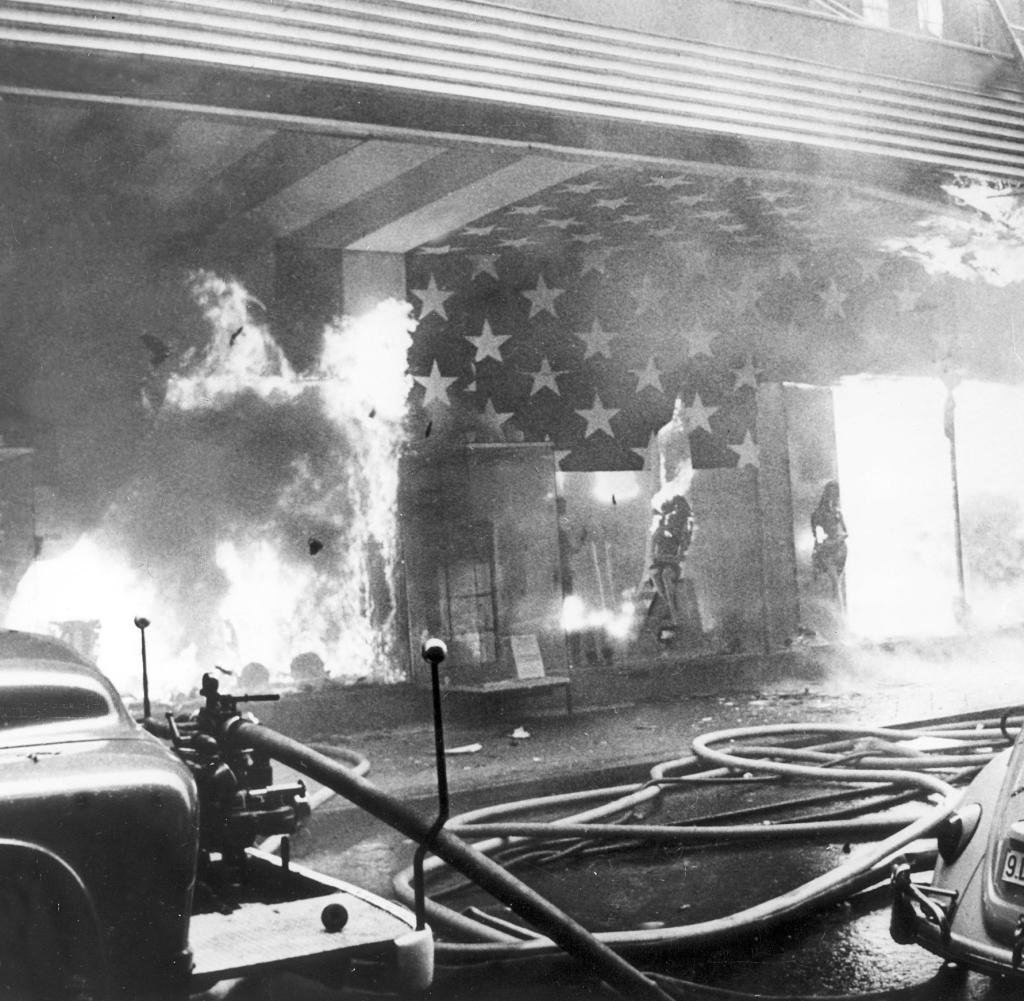
However, the US is not exactly popular in Europe at the moment due to the ongoing war in Vietnam. As a result, some people viewed a promotion campaign called "US Parade" not as an exciting shopping opportunity but as a provocation. And so anti-war protesters took to picketing the store and distributing pamphlets. Why those protesters felt that picketing a department store selling American goods would be more effective than protesting outside the US Embassy only four Metro stations away is a question only they can answer.
The overwhelming majority of those anti-war protesters were peaceful, if noisy. And indeed, most of the young protesters were horrified at the scenes unfolding before them, as the store went up in flames. Some protesters had firecrackers, which according to Inno staff members kept going off on the Rue Neuve outside and sometimes even inside the store. In fact, a surviving sales clerk later reported that she had become so used to the cries of protesters and the sound of firecrackers in the street that she initially mistook the cries for help and the crackling of the fire for yet more firecrackers and yelling protesters.
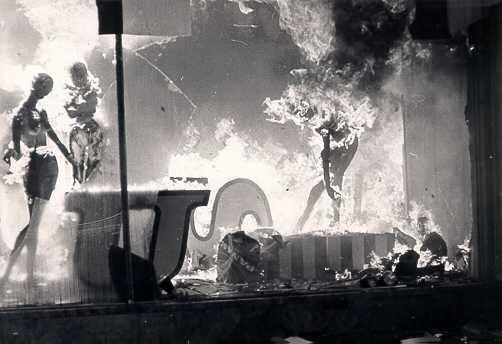
As everybody should know, firecrackers need to be handled carefully and kept away from flammable materials. Did one of the protesters enter the store, ignite a firecracker and accidentally set the building ablaze? Or – worse – did someone deliberately set the fire inside the store? At any rate, survivors report seeing a man inside the store crying, "I'm giving my life for Vietnam," when the fire broke out. Furthermore, store manager Willy Bernheim reported that À l'Innovation had been receiving bomb threats.
As someone who opposes to the Vietnam war, I agree with the message of the protesters, if not their methods, since harassing shoppers and department store employees will certainly not stop the war in Vietnam. Therefore, I was horrified when I first heard about speculations that the fire my have been due to arson.
"Surely it was an accident," I thought, "An idiot playing with firecrackers, who intended to cause a small nuisance and had no idea what he or she wrought. Surely nobody dedicated to peace would deliberately burn down a building filled with hundreds of people."
And then I saw the latest pamphlets published by the Kommune 1…
The Kommune 1 and Their Shocking Lack of Empathy
The Kommune 1 is a group of leftist activists who believe that the nuclear family is the root of fascism and therefore want to experiment with alternative forms of communal living. This group–eight young men and women, as well as two of their children–moved together into an apartment in West Berlin earlier this year.
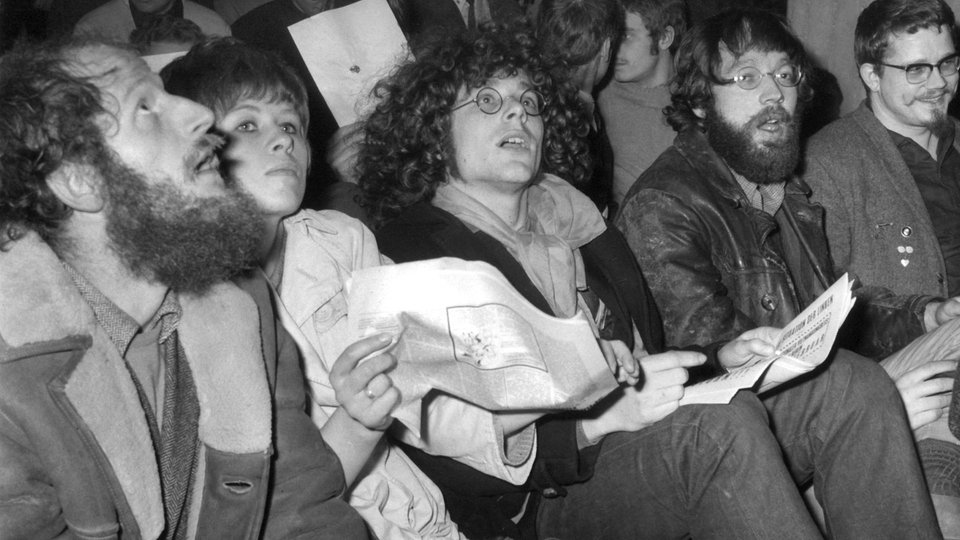
This experiment in alternative living was political from the start and so the Kommune 1 quickly became notable for their creative but also extreme protests such as scaling the Kaiser Wilhelm Memorial Church to throw pamphlets and Mao Bibles onto the street below or the plan to hurl pudding at US Vice President Hubert H. Humphrey during his visit to West Berlin last month, which brought them to the attention of the police.

The members of the Kommune 1 claim to have been in contact with the organisers of the protests in Brussels, a Maoist group named "Action for Peace and Friendship between Nations", and their spokesperson Maurice L. And so a pamphlet published by the Kommune 1 two days after the fire quoted Maurice L. who admitted not only to organising the protests, but also to setting off firecrackers inside the store to "accustom the staff to explosions and screams" and sending bomb threats to the store management to gauge police response. In fact, the pamphlet implies that the fire was no tragic accident, but a meticulously planned attack.
All this is very disturbing, but even more disturbing is the reaction of the authors of the pamphlet (credited to Dagrun Enzensberger, former wife of writer Hans Magnus Enzensberger and mother of a nine-year-old daughter, and her former brother-in-law Ulrich Enzensberger) who fail to show any empathy at all for the more than three hundred victims of the fire. Instead, the pamphlet proudly notes that the effect of the "great happening", which is how they refer to the protest, exceeded expectations.
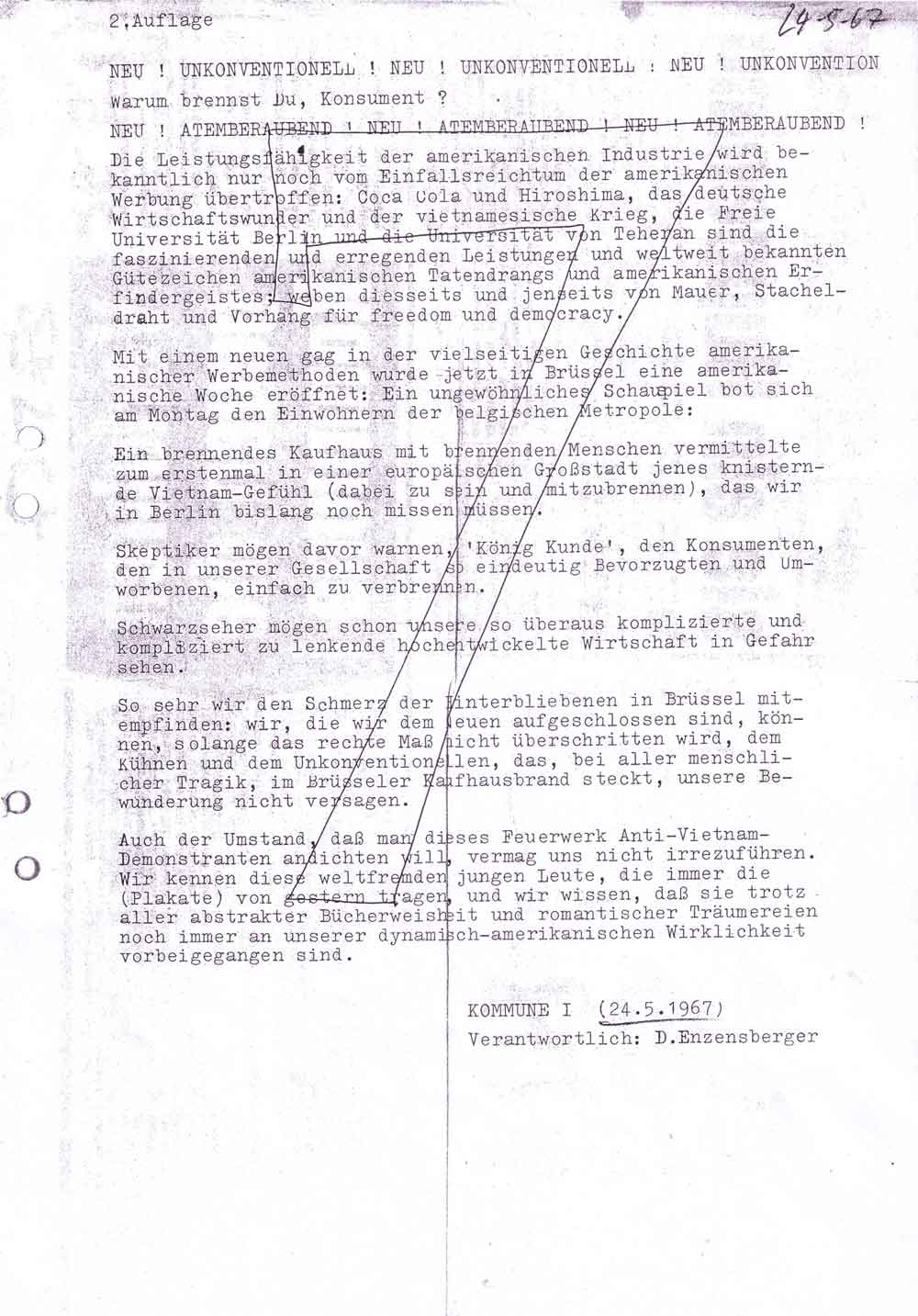
The next pamphlet, published on the same day, was even worse. Herein, the Kommune 1 explicitly cheers about the deaths of more than three hundred people (referred to as "overfed bourgeois consumers"), because "a burning department store with burning people will provide – for the first time in a European metropolis – that prickling Vietnam sensation (being there and burning) that we in Berlin are still missing."
To say I was disgusted is putting it mildly. In fact, the members of the Kommune 1 should count themselves lucky that I only received the pamphlets in the mail from a friend who lives in West Berlin (and was just as horrified by their content as I was), because otherwise I might well have rung the doorbell of the apartment on the corner of Stuttgarter Platz and Kaiser-Friedrich-Straße and punched whomever opened the door in the face.
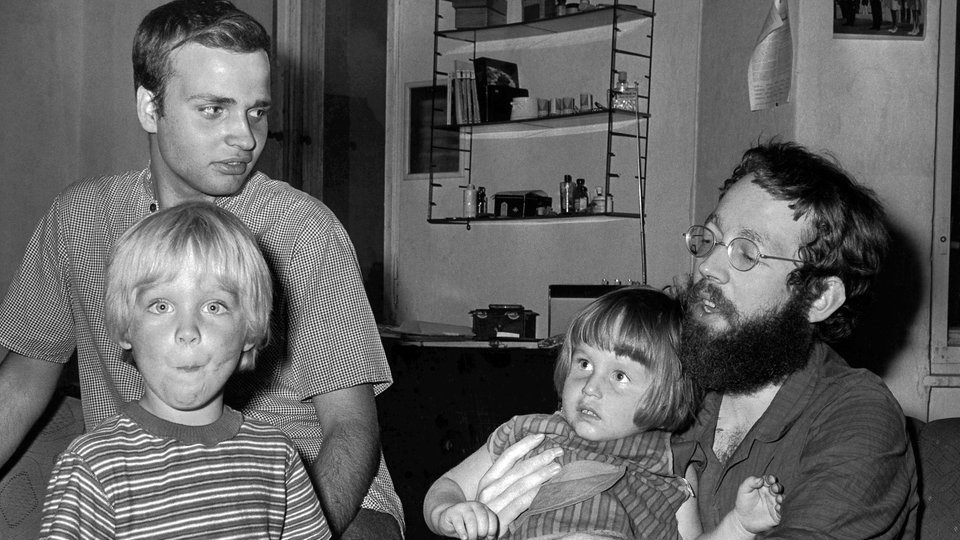
But it gets even worse, because the Kommune 1 did not stop at cheering about the deaths of more than three hundred people, they apparently enjoyed the horrifying TV footage of the fire so much that their next two pamphlets explicitly call for setting department stores in West Berlin on fire or maybe blowing up a military base or causing the collapse of a stand in a sports stadium filled with spectators. There were also threats against the Shah of Persia, who will be visiting West Germany in early June.
Now I have sympathy for the frustration felt by anti-war protesters that their peaceful protests seem to have little impact, though more and more people around the world are turning against the war in Vietnam. However, violence is not the answer, let alone violence on such a horrifying scale as what happened in Brussels. And calling for violence, even if meant satirically, as the Kommune 1 claimed once the West Berlin police knocked on their door, is utterly despicable, especially since someone might take those calls seriously and cause the next large-scale fire.
Let's be clear, so far no one truly knows what happened at À l'Innovation and what caused the fire. It's quite possible that the mysterious Maurice L. is blowing hot air or that he is merely a figment of the Kommune 1's imagination.
However, no decent human being, let alone someone who considers themselves on the left or anti-war, should ever cheer about the deaths of others. And make no mistake, the more than three hundred people who died at the À l'Innovation were innocents. They were people who were at work or shopping or having lunch. Many of them may well have been opposed to the war in Vietnam themselves. Several of the dead were young children, about the same age as the daughter of Dagrun Enzensberger, or even younger.
This whole thing is utterly disgusting and I do hope that the broader Left will make it very clear to groups like the Kommune 1 or the ironically named "Action for Peace and Friendship between Nations" that such behaviour is neither acceptable nor welcome. I also hope that if the À l'Innovation fire was indeed due to arson, the perpetrators will be caught and brought to justice soon.


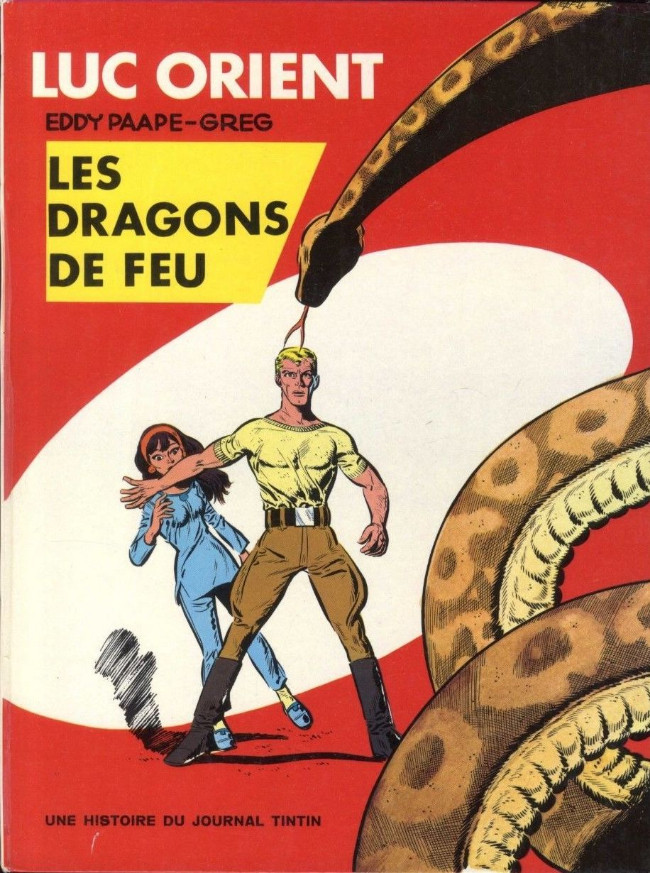
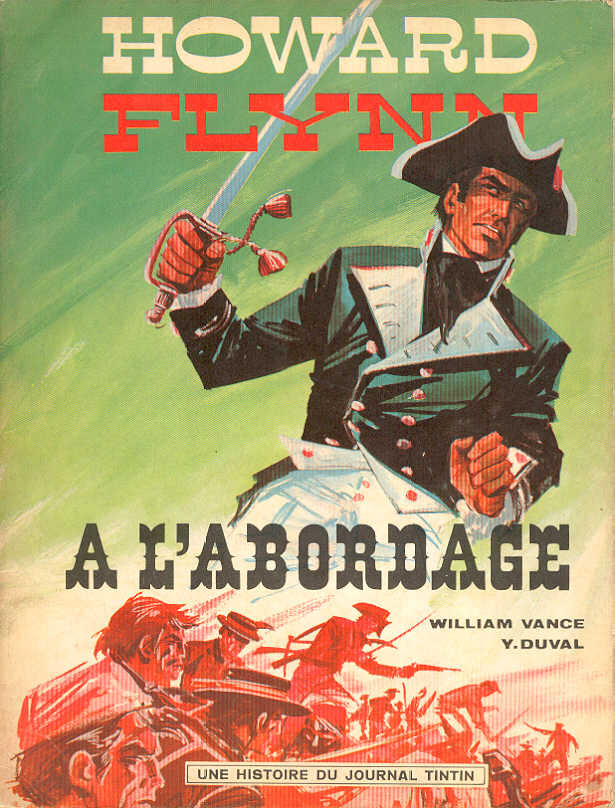
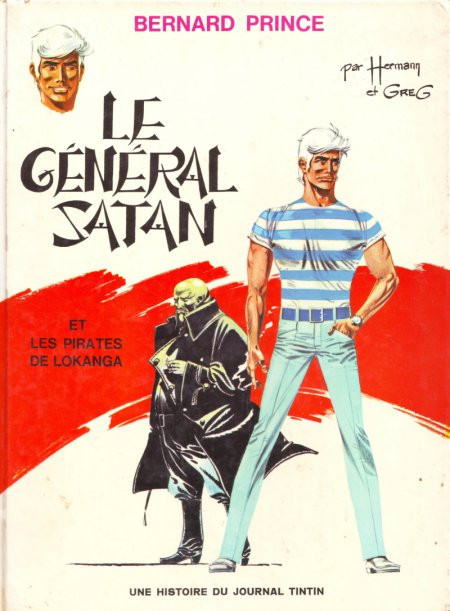
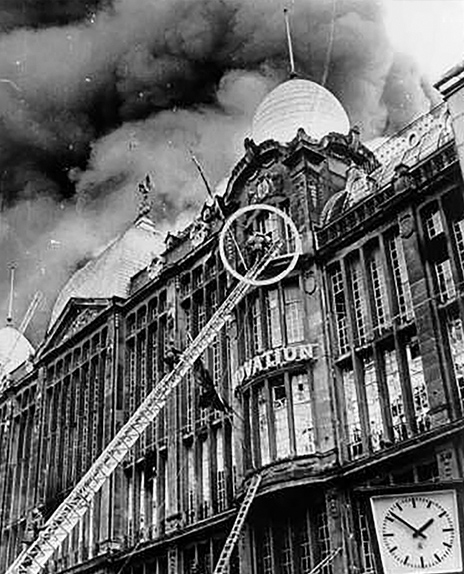

![[March 6, 1965] Breaking Up Is Hard To Do (<i>Crack in the World</i> and Other Planet-Destroying Movies)](https://galacticjourney.org/wp-content/uploads/2020/02/PDVD_000-672x372.jpg)

